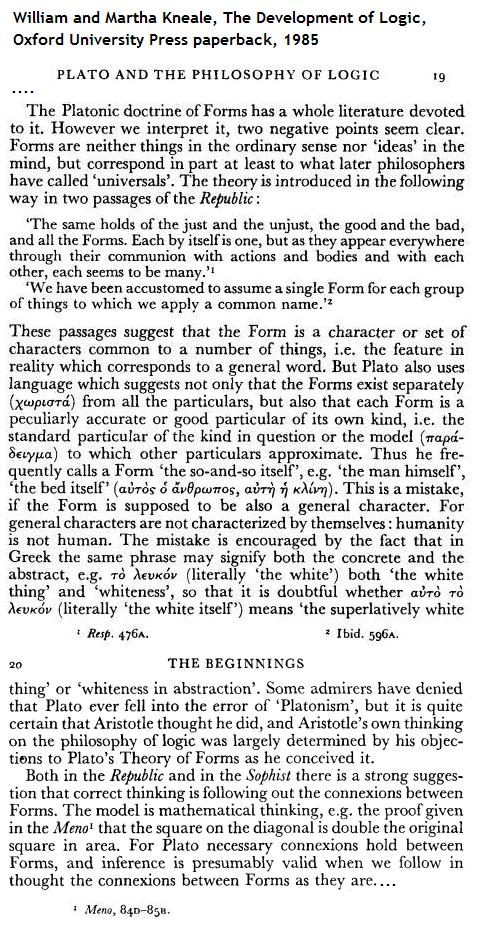Wednesday, June 16, 2021
In Memory of J. Hillis Miller
Sunday, June 13, 2010
Sunday School
“What on earth is a 'concrete universal'?"
— Said to be an annotation (undated)
by Robert M. Pirsig of A History of Philosophy,
by Frederick Copleston, Society of Jesus.
From Aaron Urbanczyk's 2005 review of Christ and Apollo by William Lynch, S.J., a book first published in 1960—
"Lynch's use of analogy vis-a-vis literature provides, in a sense, a philosophical basis to the theoretical paradox popularized by W. K. Wimsatt (1907-1975), which contends that literature is a sort of 'concrete universal.'"
The following figure has often been
offered in this journal as a symbol of Apollo—

Arguments that it is, rather, a symbol of Christ
may be left to the Society of Jesus.
One possible approach—
Urbanczyk's review says that
"Christianity offers the critic
a privileged ontological window…."
"The world was warm and white when I was born:
Beyond the windowpane the world was white,
A glaring whiteness in a leaded frame,
Yet warm as in the hearth and heart of light."
Thursday, July 16, 2009
Thursday July 16, 2009
The White Itself
David Ellerman has written that
"The notion of a concrete universal occurred in Plato's Theory of Forms [Malcolm 1991]."
A check shows that Malcolm indeed discussed this notion ("the Form as an Ideal Individual"), but not under the name "concrete universal."
See Plato on the Self-Predication of Forms, by John Malcolm, Oxford U. Press, 1991.
From the publisher's summary:
"Malcolm…. shows that the middle dialogues do indeed take Forms to be both universals and paradigms…. He shows that Plato's concern to explain how the truths of mathematics can indeed be true played an important role in his postulation of the Form as an Ideal Individual."
Ellerman also cites another discussion of Plato published by Oxford:
For a literary context, see W. K. Wimsatt, Jr., "The Structure of the Concrete Universal," Ch. 6 in Literary Theory: An Anthology, edited by Julie Rivkin and Michael Ryan, Wiley-Blackwell, 2004.
Other uses of the phrase "concrete universal"– Hegelian and/or theological– seem rather distant from the concerns of Plato and Wimsatt, and are best left to debates between Marxists and Catholics. (My own sympathies are with the Catholics.)
Two views of "the white itself" —
"So did God cause the big bang? Overcome by metaphysical lassitude, I finally reach over to my bookshelf for The Devil's Bible. Turning to Genesis I read: 'In the beginning there was nothing. And God said, 'Let there be light!' And there was still nothing, but now you could see it.'" -- Jim Holt, Big-Bang Theology, Slate's "High Concept" department "The world was warm and white when I was born: Beyond the windowpane the world was white, A glaring whiteness in a leaded frame, Yet warm as in the hearth and heart of light." -- Delmore Schwartz
"The world was warm and white when I was born: Beyond the windowpane the world was white, A glaring whiteness in a leaded frame, Yet warm as in the hearth and heart of light." -- Delmore Schwartz
Monday, November 27, 2006
Monday November 27, 2006
of Philosophy
“What on earth is
a ‘concrete universal’?”
— Said to be an annotation
(undated)
by Robert M. Pirsig of
A History of Philosophy,
by Frederick Copleston,
Society of Jesus.
For an answer, see
“The Structure of the
‘Concrete Universal’
in Literature,”
by W. K. Wimsatt, Jr.,
PMLA, Vol. 62, No. 1
(March, 1947), pp. 262-280.
This is reprinted in Wimsatt’s
The Verbal Icon:
Studies in the
Meaning of Poetry.
The final chapter of
The Verbal Icon
is titled
“Poetry and Christian Thinking.”
For more on Wimsatt
and this topic, see
“Reclaiming the Bible
as Literature,”
by Louis A. Markos.

